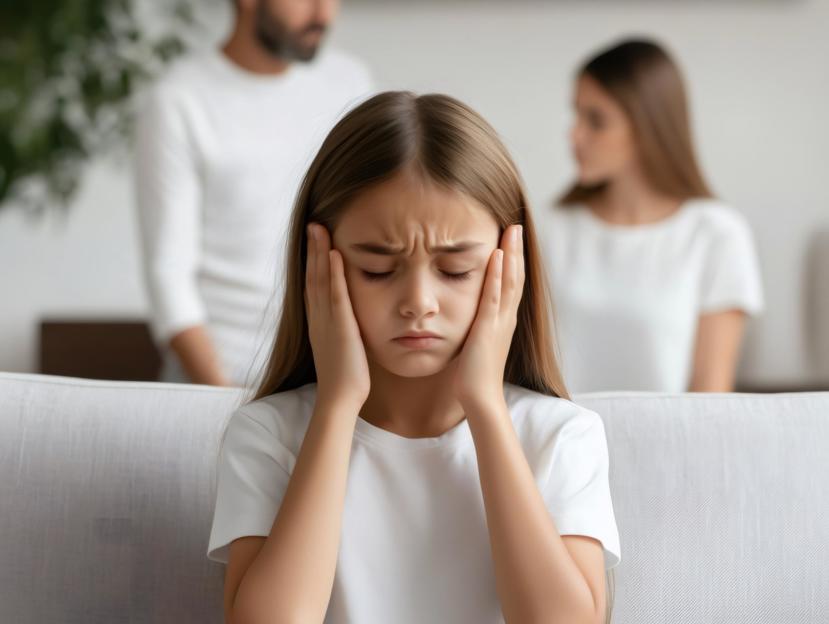The Impact of Parental Separation on Children and Adolescents: My Insights and Recommendations

Dr. Miguel A. Soto: Champion of Change and Advocate for Marginalized Communities Dr. Miguel A. Soto is a passionate and dedicated Clinical Social Worker whose commitment to promoting social justice and providing clinical care to vulnerable populations is unparalleled. Dr. Soto's journey in social work began with... more
As someone deeply invested in the well-being of children and adolescents, I've often contemplated the significant life event that parental separation or divorce represents and its profound short- and long-term effects on young individuals. In this article, I will share my observations on the psychological, emotional, and social impacts of parental separation, alongside strategies for minimizing these effects. Drawing from my experiences with The HOPE Institute, I aim to provide evidence-based recommendations for mitigating the negative outcomes associated with parental separation.
Effects of Parental Separation on Children and Adolescents
Psychological and Emotional Impacts:
In my experience, I have witnessed children and adolescents facing a range of psychological and emotional challenges following parental separation. Studies that I've read corroborate my observations, noting higher rates of anxiety, depression, and behavioral issues in children from separated families (Amato, 2000; Lansford, 2009). These young individuals may experience a sense of loss, confusion, and insecurity, and it's not uncommon for them to internalize guilt regarding their parents’ separation.
Academic Performance:
Through my interactions, I've noticed that children from separated families often encounter disruptions in their academic performance. The emotional turmoil during separation and potential instability at home may result in difficulties concentrating on studies, leading to a decline in academic achievement (Grych & Fincham, 1992; Sun & Li, 2011).
Social and Behavioral Outcomes:
I've also observed that social adjustments can be challenging for children as they navigate the changing dynamics at home. Research, as I understand it, indicates that children from separated parents may have trouble forming and maintaining relationships with peers (Hetherington, 1999). Adolescents, in particular, might exhibit increased aggression or withdrawal (Kelly & Emery, 2003).
Strategies for Minimizing Negative Impacts:
Importance of Communication:
From my perspective, effective co-parenting and communication are pivotal in minimizing the negative impacts of separation. It's crucial for parents to prioritize open dialogue with their children, providing them with reassurance and support (Pedro-Carroll, 2010). Keeping children informed about changes and allowing them to express their feelings can significantly reduce anxiety and misunderstandings.
Stability and Routine:
I believe that maintaining stability and routine offers children a sense of normalcy and security. Encouraging children to continue following established daily routines can help mitigate feelings of instability. I've seen that shared custody arrangements can promote retention of relationships with both parents (Pruett & Cowan, 2006).
Counseling and Support Programs:
In my opinion, access to counseling and support programs makes a noticeable difference during transitions. Family therapy or child-focused counseling programs offer vital support by providing a space for all family members to process their feelings and improve communication (Stolberg & Mahler, 1994).
Case Study: My Observations on the Role of the HOPE Institute in Facilitating Positive Outcomes
Through my work at the HOPE Institute, I've witnessed firsthand how the right therapy can support families going through separations. Specializing in evidence-based approaches, the Institute offers tailored counseling services, workshops, and resources to assist families in transition. As a respected expert in family therapy, I emphasize resilience-building and emotional intelligence in both children and parents.
The practices I've adopted align with methods, which center around fostering a supportive co-parenting environment. My work in developing therapy interventions designed for children during separations offers valuable insights. Through group therapy sessions, the use of music, art, and personalized counseling, my efforts have proven effective minimizing adverse effects on children, resulting in improved academic, social, and emotional outcomes.
Conclusion:
The issue of parental separation can indeed have considerable impacts on children and adolescents, but I've learned that with informed and compassionate strategies, we can mitigate these effects. Effective communication, stability, and professional support emerge as critical components in ensuring a healthy adjustment for young individuals. Our work at the HOPE Institute exemplifies how dedicated resources and innovative therapy approaches can foster resilience and adaptation in children. This brings hope to families facing the challenges of separation.
References
Amato, P. R. (2000). The consequences of divorce for adults and children. *Journal of Marriage and Family,* 62(4), 1269-1287.
Grych, J. H., & Fincham, F. D. (1992). Interventions for children of divorce: Toward greater integration of theory and practice. *Psychological Bulletin,* 111(3), 434-454.
Hetherington, E. M. (1999). Should we stay together for the sake of the children? In E. M. Hetherington (Ed.), *Coping with divorce, single parenting, and remarriage: A risk and resiliency perspective* (pp. 93-116). Lawrence Erlbaum Associates.
Kelly, J. B., & Emery, R. E. (2003). Children’s adjustment following divorce: Risk and resilience perspectives. *Family Relations,* 52, 352-362.
Lansford, J. E. (2009). Parental divorce and children’s adjustment. *Perspectives on Psychological Science,* 4(2), 140-152.
Pedro-Carroll, J. L. (2010). *Putting children first: Proven parenting strategies for helping children thrive through divorce.* Avery.
Pruett, M. K., & Cowan, P. A. (2006). Understanding infants’ relationships in the context of divorce. *Family Court Review,* 44(2), 203–212.
Stolberg, A. L., & Mahler, J. C. (1994). Enhancing treatment gains in a divorce intervention program for children: Modifying specific interventions according to a child's risk status and resources. *Journal of Clinical Child Psychology,* 23(4), 463-473.
Sun, Y., & Li, Y. (2011). Effects of family structure type and stability on children's academic performance trajectories. *Journal of Marriage and Family,* 73(3), 541-556.6.








